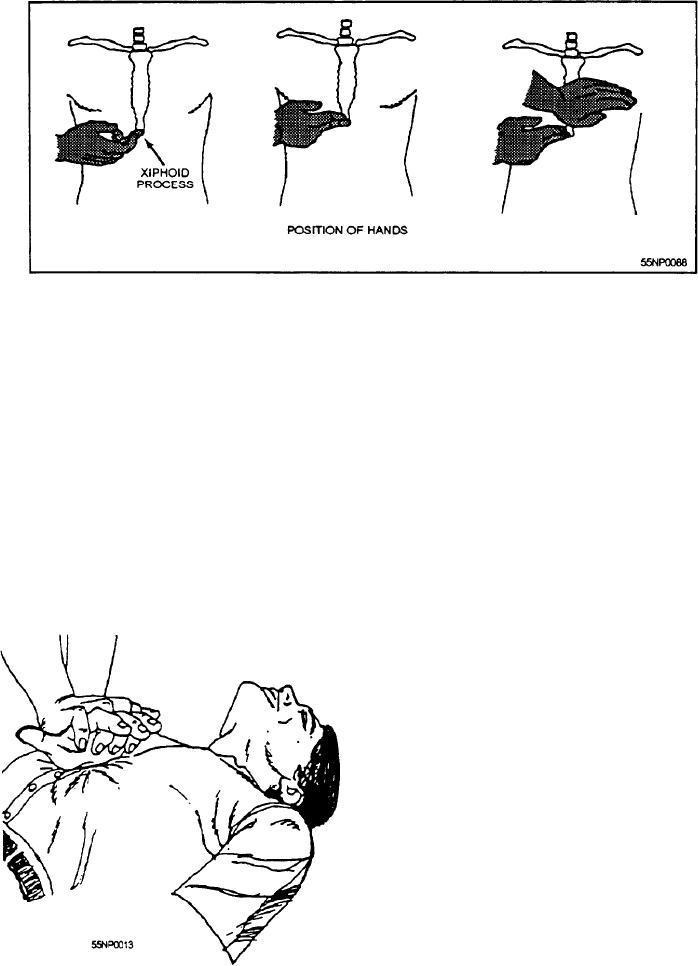
Figure 1-11.--Xiphoid process.
After 15 compressions, you must give the victim 2
of the hands in place on the chest. This process
compresses the heart between the sternum and the
ventilations. Continue for four full cycles of 15
victim's back, thus pumping blood to the vital parts of
compressions and 2 ventilations. Then take 5 seconds
the body.
to check for the carotid pulse and spontaneous
If you use the proper technique, a more effective
breathing. If there are still no signs of recovery,
compression will result, and you will feel less fatigue.
continue CPR. If a periodic check reveals a return of
Ineffective compression occurs when the elbows are not
puke and respiration, stop CPR. Closely watch the
locked, the rescuer is not directly over the sternum, or
victim's puke and respirations, and be prepared to start
the hands are improperly placed on the sternum.
CPR again if required If a pulse is present but no
respiration, continue to give the victim one ventilation
When one rescuer performs CPR, the ratio of
compressions to ventilations is 15 to 2. It is performed
every 5 seconds and check the pulse frequently.
at a rate of 80 to 100 compressions per minute. Vocalize
Let's review the steps for one-rescuer CPR:
"one, and two, and three," and so on, until you reach 15.
1. Determine whether the victim is conscious.
2. Open the airway (it may be necessary to remove
the airway obstruction).
3. Link, listen, and feel.
4. Ventilate two times.
5. Check the pulse--if none, call for help.
6. Begin the compression-ventilation ratio of 15 to
2 for four complete cycles.
7. Check again for a pulse and breathing. If no
change, continue the compression-ventilation
ratio of 15 to 2 until the victim is responsive,
until you are properly relieved, until you can no
longer continue because of exhaustion or until
the victim is pronounced dead by a medical
officer. For additional information refer to
Standard First Aid Training Course,
Figure 1-12.--Interlocking fingers to help keep fingers ON the
NAVEDTRA 12081.
chest Wall.
1-21

